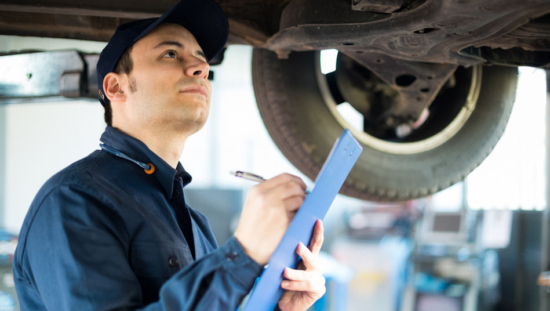TyreSafe: Annual MoT tests needed to counter driver maintenance apathy
 MoT inspectors need to check tyres annually, because many motorists don’t (Photo: TyreSafe)
MoT inspectors need to check tyres annually, because many motorists don’t (Photo: TyreSafe)
The government is considering scrapping the annual MoT test and replacing it with an inspection every two years, and this is a proposal that TyreSafe would like decision-makers to ponder very carefully – for the sake of road safety.
TyreSafe is concerned that the shift to a biennial regime will increase the number of unroadworthy vehicles on our motorways and streets. Updates to the MoT in 2018 saw the addition of new categories for defects, including ‘dangerous defects’. Some 7.7 million vehicles have failed their first MoT test since the update, and defects recorded include more than 2 million for tyres. The tyre safety points out that inspectors categorised 59 per cent of these as ‘dangerous’.
We don’t yet know how many of these vehicles would continue to drive with dangerous tyre defects had they not failed an annual MoT. But TyreSafe considers it possible that hundreds of thousands of vehicles would have remained in operation, potentially until a catastrophic tyre failure occurred.
Don’t cut corners on safety
“While TyreSafe respects the government’s intention to reduce the financial burden on households, cutting corners on safety is not a responsible solution,” states Stuart Jackson, chair of TyreSafe. “The price paid in maintaining a vehicle in roadworthy condition is insignificant compared with the human cost of a casualty caused by an incident which might have been avoided.
“TyreSafe research shows time and again there is a reluctance among a large number of Britain’s motorists to maintain their tyres to an appropriate level of roadworthiness,” Jackson continues. “Our Tread Depth Survey with National Highways revealed over a quarter of tyres were already illegal when replaced, meaning 10 million vehicles a year could be on our roads with illegal and dangerous tyres. Without the annual MoT, it’s clear that number would be far greater as would be the risks to all road users.
“Vehicles are increasingly more reliable, efficient, and safe but all of them require regular inspection to ensure wearable, maintenance parts are in good order. None of these is more vulnerable to damage than tyres, the only point of contact with the road, directly influencing the performance of a vehicles’ ability to brake and steer.
“TyreSafe looks forward to the day when all motorists take responsibility for ensuring their vehicles are safe without the need for enforcement – but we are not there yet. At present, this is not the case and too often motorists wait until the MoT test to have their tyres inspected.
Jackson concludes that “if government wishes to achieve the reduction in casualties on our roads,” it needs to “rethink extending the MoT to every two years for all road users’ sake.”

 Continental
Continental

Comments